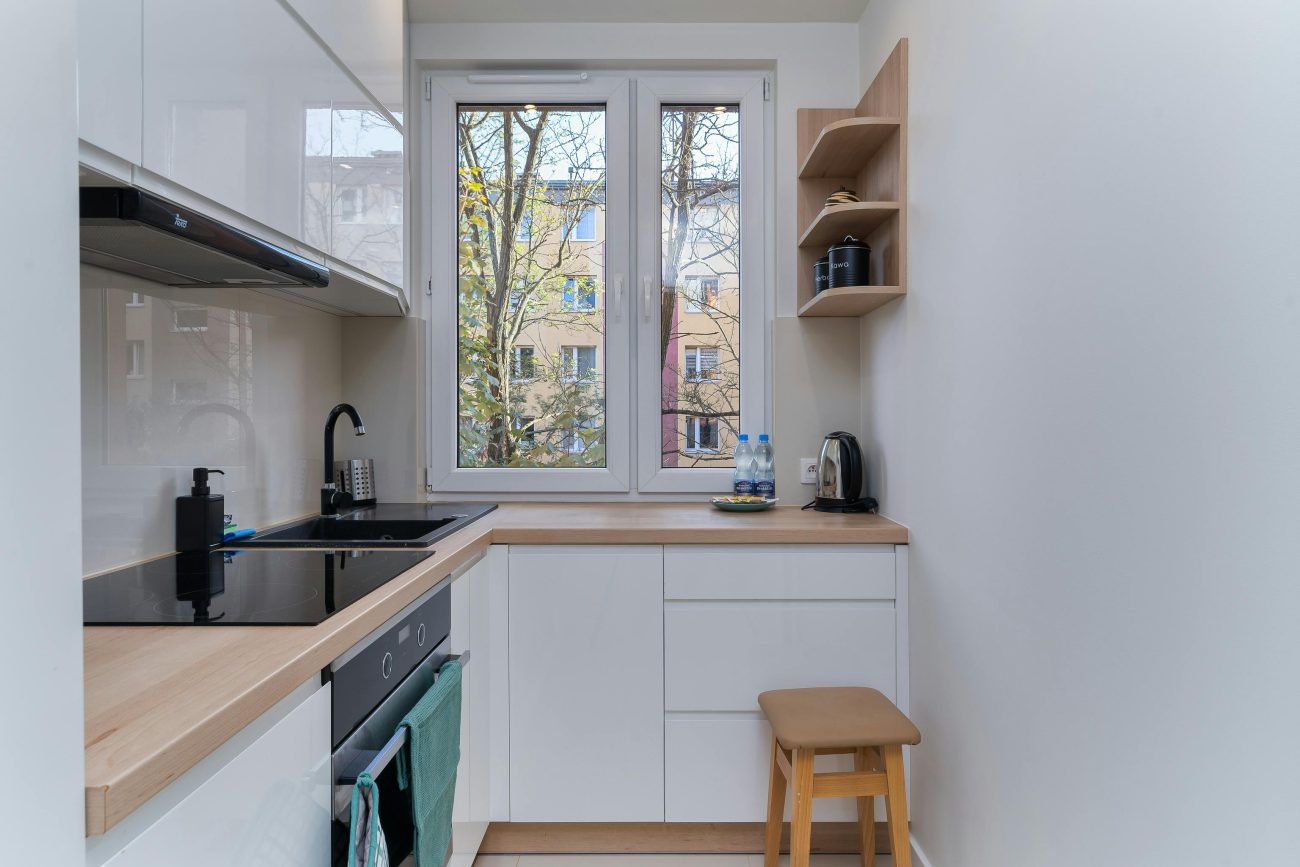Introduction
A small kitchen doesn’t have to feel cramped, cluttered, or chaotic. With the right strategies, tools, and mindset, even the tiniest kitchen can be transformed into a well-organized, functional, and aesthetically pleasing space. Whether you’re living in a studio apartment or have a compact kitchen in your home, this guide will walk you through proven methods to organize a small kitchen for maximum efficiency.
Section 1: Declutter First – The Golden Rule
Before you buy new organizers or rearrange your cabinets, you need to get rid of the clutter. Go through every drawer, shelf, and cabinet and ask yourself:
- When was the last time I used this?
- Do I have duplicates?
- Is this broken, outdated, or unnecessary?
Pro Tip:
Create three boxes labeled: Keep, Donate, and Trash. This will make the process faster and more decisive.
Section 2: Use Vertical Space Like a Pro
Small kitchens have one major opportunity: height. Look up and take advantage of your walls.
Ideas:
- Install open shelves above countertops or over the sink.
- Use wall-mounted racks for utensils, spices, and pots.
- Add magnetic strips for knives and scissors.
These changes free up drawer and counter space, making your kitchen more open and easier to navigate.
Section 3: Smart Storage Solutions for Small Spaces
Make every inch count with space-saving kitchen storage tools.
Top Picks:
- Pull-out cabinet organizers: Access items at the back easily.
- Stackable shelves: Double your storage on a single shelf.
- Tension rods: Use them under the sink to hang spray bottles.
- Over-the-door racks: Utilize cabinet doors for storing lids, cleaning supplies, or towels.
Section 4: Group Items by Function
Keep similar items together to streamline your cooking process. Here’s how to create zones:
- Prep Zone: Cutting boards, knives, mixing bowls.
- Cooking Zone: Pots, pans, cooking utensils, oils.
- Serving Zone: Plates, bowls, cutlery, serving spoons.
- Cleaning Zone: Soaps, sponges, towels.
When you group by task, you’ll spend less time searching and more time cooking.
Section 5: Optimize the Refrigerator and Pantry
A cluttered fridge can lead to wasted food and time. Here’s how to fix that:
Refrigerator Tips:
- Use clear bins to group dairy, snacks, or condiments.
- Label shelves so everyone in the house knows where things go.
- Use Lazy Susans for awkward corner shelves.
Pantry Tips:
- Categorize: Grains, canned goods, snacks, baking.
- Use clear containers for dry foods.
- Add tiered shelves to see items at the back.
Section 6: Make Use of Corners and Awkward Spaces
Corner cabinets and weird gaps can become prime real estate.
- Use Lazy Susans in corner cabinets.
- Install corner shelving units.
- Fit rolling carts in narrow gaps next to appliances.
Section 7: Keep Countertops Clean and Clear
Clear counters equal calm minds. Only keep daily essentials visible.
Keep on the counter:
- Coffee maker
- Toaster
- One small container for utensils
- Fruit bowl (optional)
Everything else? Store it away to keep visual clutter at bay.
Section 8: Choose Multi-Functional Furniture and Tools
In a small kitchen, every tool should do double duty.
- Collapsible colanders and bowls
- Cutting boards that fit over the sink
- Tables with storage underneath
- Stools with hidden compartments
These add functionality without taking up space.
Section 9: Develop Daily and Weekly Habits
An organized kitchen doesn’t stay that way on its own. Build habits to maintain order.
Daily:
- Wipe counters.
- Load dishwasher.
- Put things back in their place.
Weekly:
- Check pantry for expired items.
- Organize fridge.
- Restock essentials.
Consistency = long-term efficiency.
Section 10: Add Personal Touches
Just because it’s small doesn’t mean it can’t be beautiful. Add:
- A bright rug
- Wall art
- A plant or two
- Coordinated containers or labels
A touch of style motivates you to keep the space clean.
Conclusion
Organizing a small kitchen doesn’t require expensive remodeling. With smart tools, mindful storage, and consistent habits, you can maximize space and efficiency in even the smallest kitchen. The result? A calm, beautiful, and functional area that supports your cooking and lifestyle.
FAQs
1. What’s the best way to store pots and pans in a small kitchen?
Use wall hooks, hanging racks, or vertical organizers in deep drawers.
2. How do I keep my small kitchen from feeling cluttered?
Minimize what you store on countertops and keep only the essentials visible.
3. What is the most overlooked area in small kitchen organization?
The inside of cabinet doors and vertical wall space.
